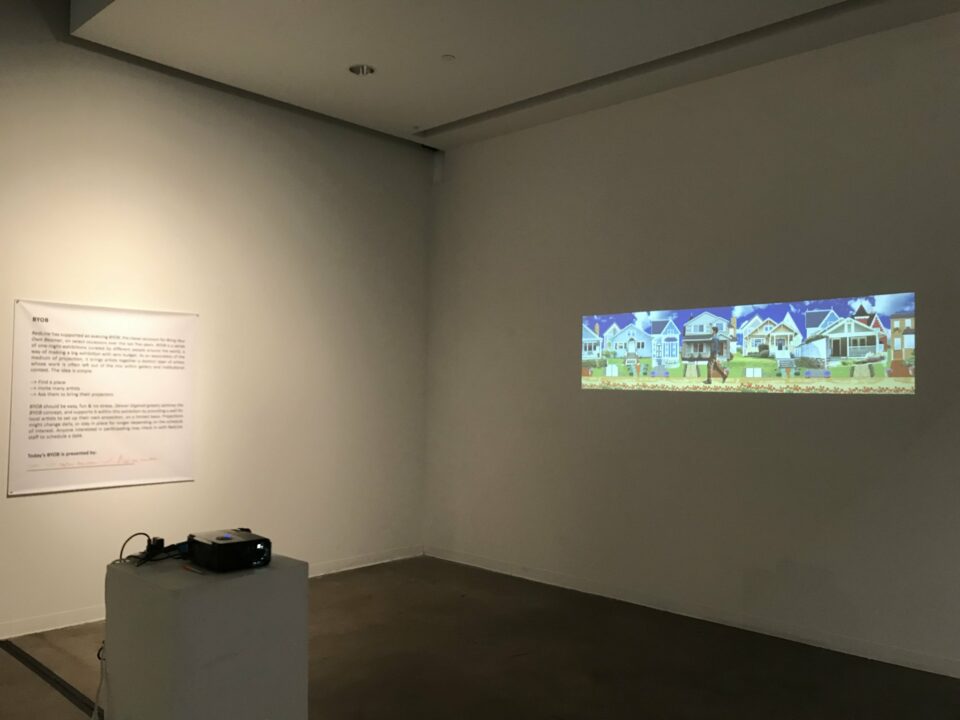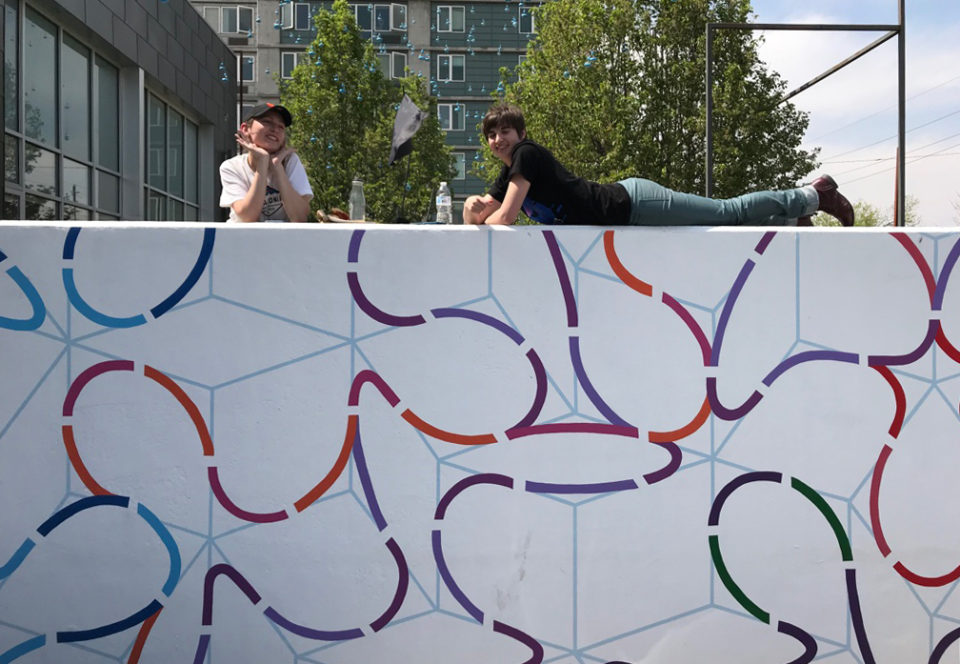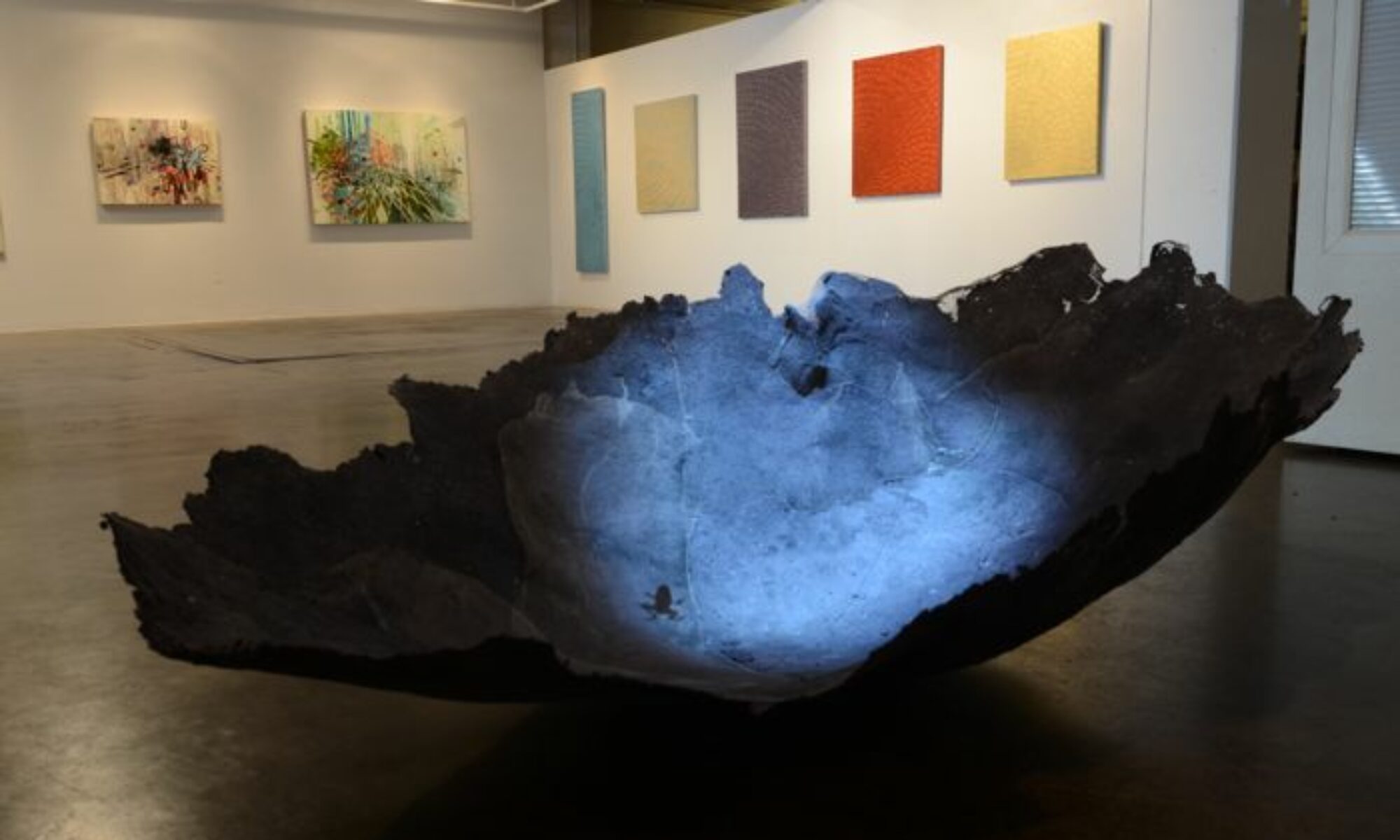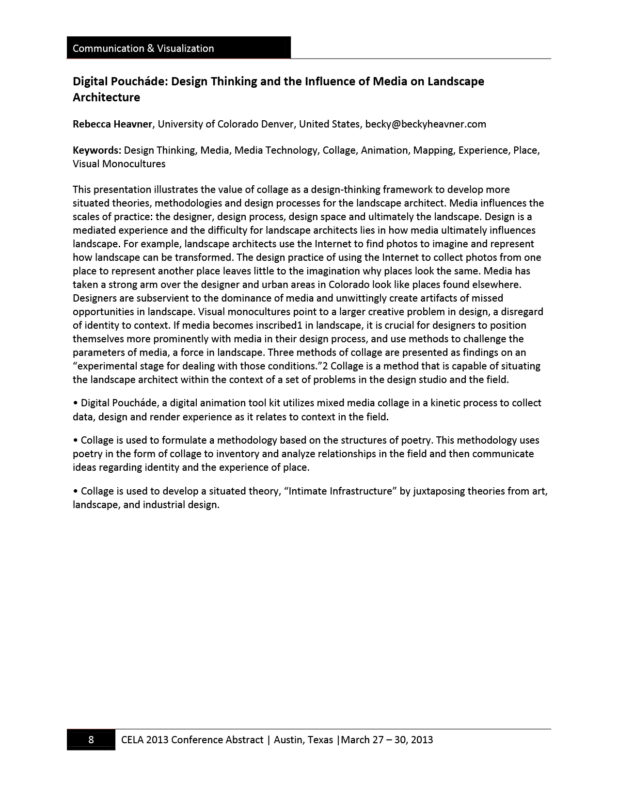Redline Gallery, “Reality Bytes” BYOB (Bring Your Own Beamer) Student Animations

CU Denver, BFA Thesis Installation, 2018

mind the gap
The field of landscape architecture is entering a new era. I think I feel it. Recently, I was in Austin, Texas attending a conference on landscape architecture. At the last minute, I changed my choice and entered a lecture a few minutes late. At the end, when questions were voiced, Anne Whiston Spirn, the third lecturer said, she had never seen research quite like the first two presentations. I too had been captivated by the research. These young voices had made and tested prototypes. If the profession of landscape architecture is not doing then it is important to make and do yourself. It was almost as if this conversion with myself was heard. Anne turned and asked the room of people if they also felt the field was changing. I think I felt it in that room. She asked “are other landscape architects making things like this and borrowing from other fields like industrial design? People agreed, Rhino is now being used and Processing to represent the data. I thought about my own experiments. If something is happening but not verbally acknowledged, it takes longer for change to happen. It was important for this photographer to voice something that some designers know. Yes, landscape architects use Rhino, Grasshopper and Processing. But more importantly, I believe she was saying landscape architects feel the need to make. Perhaps the field has been slipping into a gap, and now looking for a way out.
Today, I sat and listened to a sermon looking for a relevant message to take to heart. The minister spoke of a gap or void and of lost love. He said the intensity of love can’t be understood without a gap. It is important not to try to fill voids, but know they exist because intensity can’t be felt without them.
Council of Educators in Landscape Architecture (CELA)
Space/Time/Place/Duration
THE UNIVERSITY OF TEXAS AT AUSTIN
MARCH 27–30, 2013
Presented a paper based on my graduate thesis:
Landscape Legacy
As long products and services have existed, advertising media has been a part of the landscape. Apothecary shops selling salves and tonics extended the imagery to the outside of buildings. Here in Denver, traces of painted advertisements are faded reminders marking brick buildings. The companies that survived may have understood truth in advertising and the power of building brand legacy. Landscape architects who work with brands, have a unique challenge of understanding the brand, while serving the legacy of the landscape. Today, advertising is no longer a static concept confined to a mark on a building. It’s strength lies in the thoughtfulness of its social agency and a careful approach to the landscape. The brand and landscape are like two distinctive people. What parts of a brand are true to a place?

